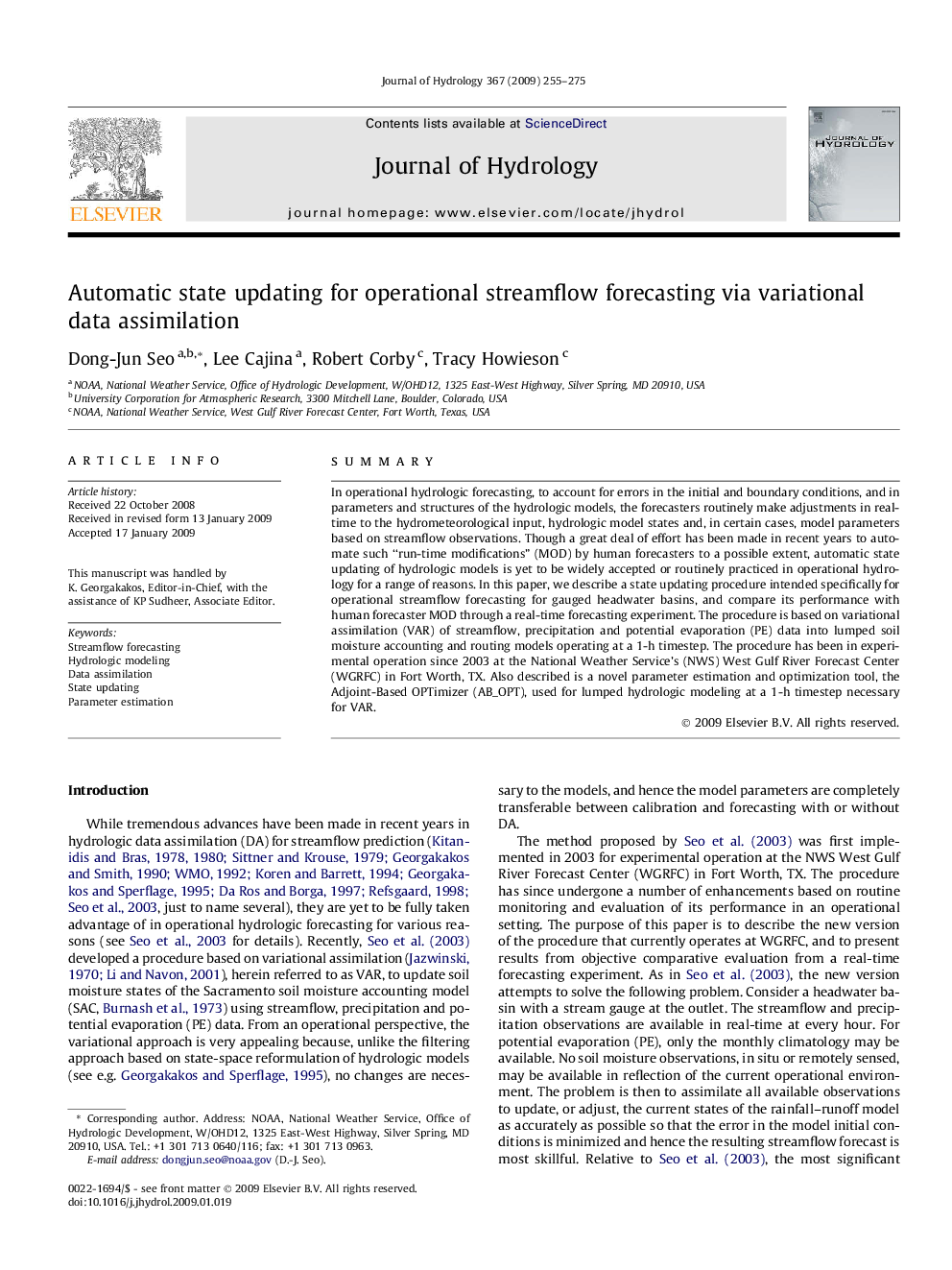| Article ID | Journal | Published Year | Pages | File Type |
|---|---|---|---|---|
| 4579010 | Journal of Hydrology | 2009 | 21 Pages |
SummaryIn operational hydrologic forecasting, to account for errors in the initial and boundary conditions, and in parameters and structures of the hydrologic models, the forecasters routinely make adjustments in real-time to the hydrometeorological input, hydrologic model states and, in certain cases, model parameters based on streamflow observations. Though a great deal of effort has been made in recent years to automate such “run-time modifications” (MOD) by human forecasters to a possible extent, automatic state updating of hydrologic models is yet to be widely accepted or routinely practiced in operational hydrology for a range of reasons. In this paper, we describe a state updating procedure intended specifically for operational streamflow forecasting for gauged headwater basins, and compare its performance with human forecaster MOD through a real-time forecasting experiment. The procedure is based on variational assimilation (VAR) of streamflow, precipitation and potential evaporation (PE) data into lumped soil moisture accounting and routing models operating at a 1-h timestep. The procedure has been in experimental operation since 2003 at the National Weather Service’s (NWS) West Gulf River Forecast Center (WGRFC) in Fort Worth, TX. Also described is a novel parameter estimation and optimization tool, the Adjoint-Based OPTimizer (AB_OPT), used for lumped hydrologic modeling at a 1-h timestep necessary for VAR.
